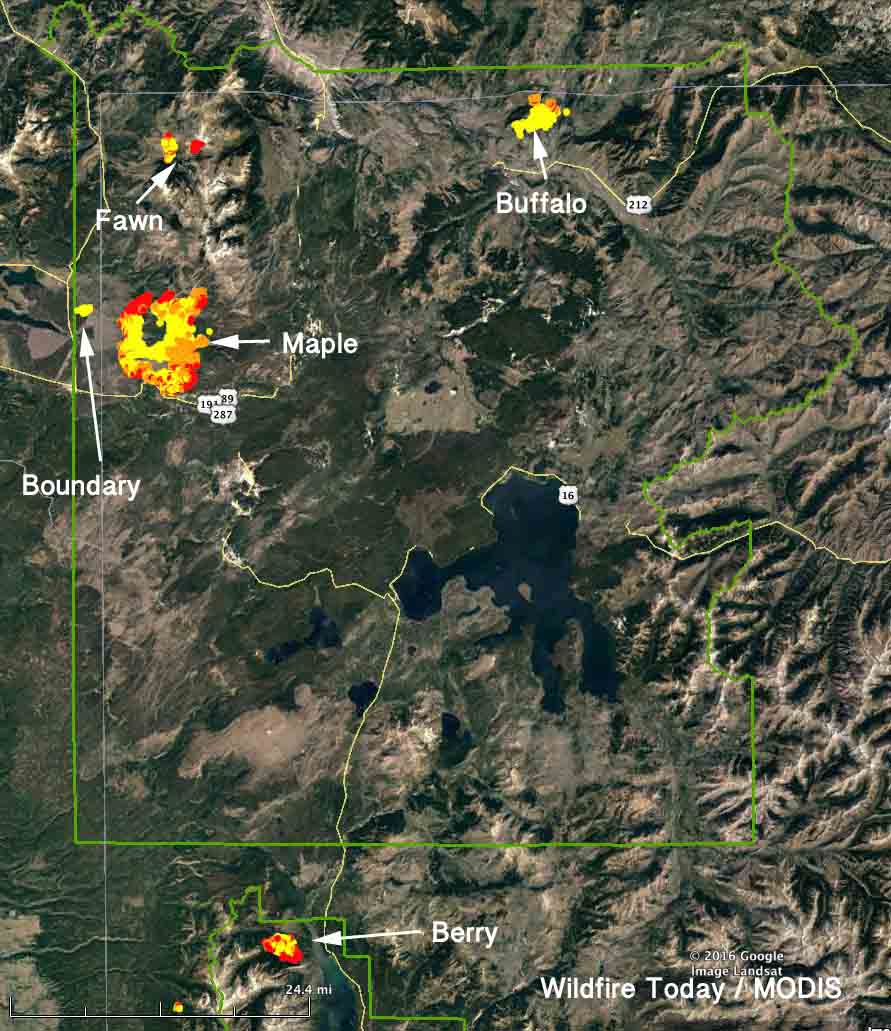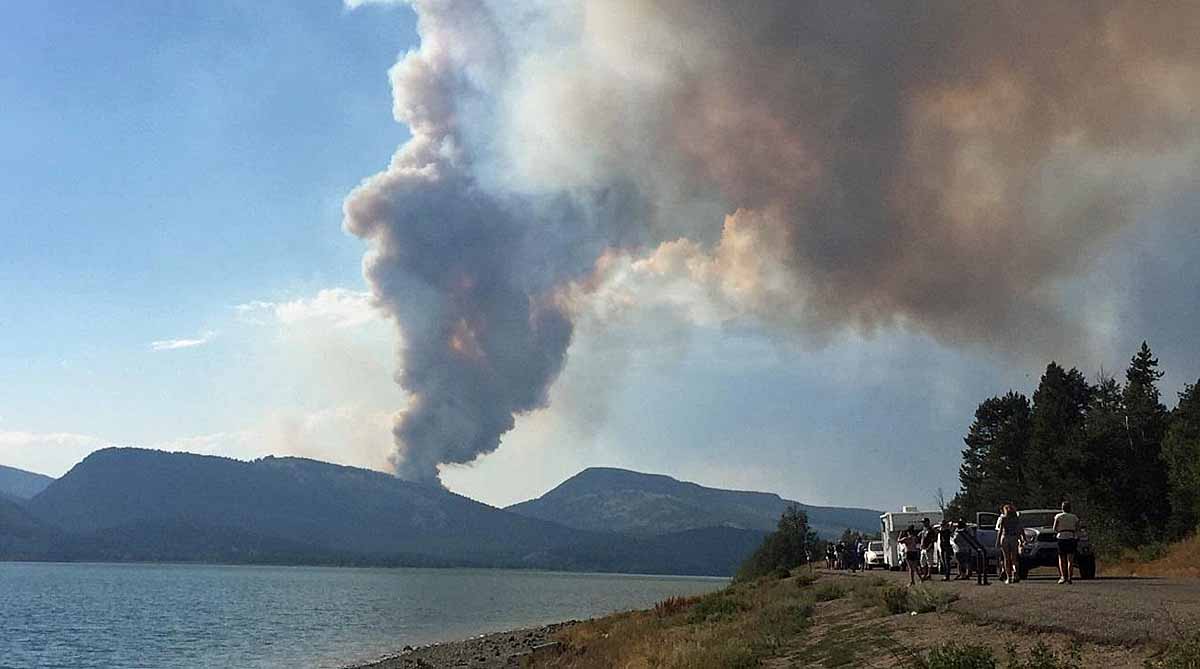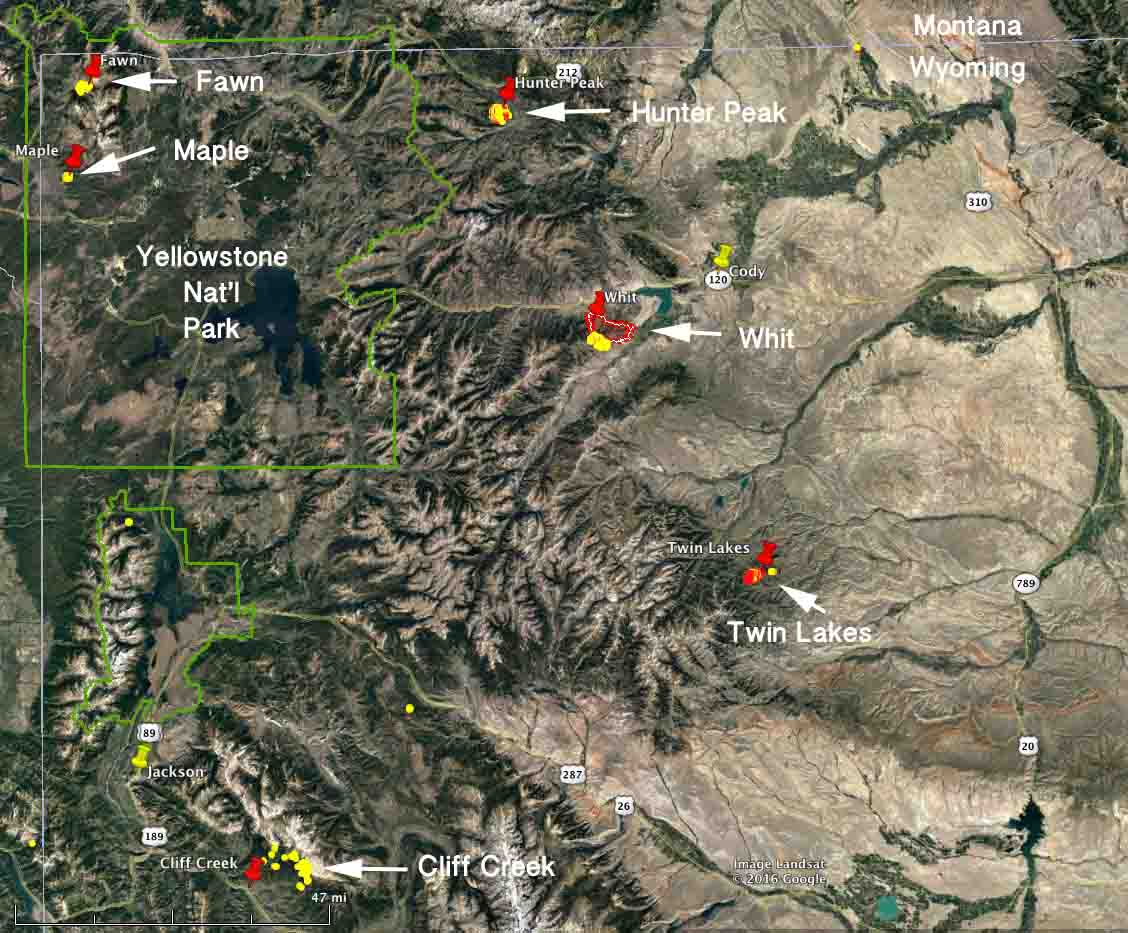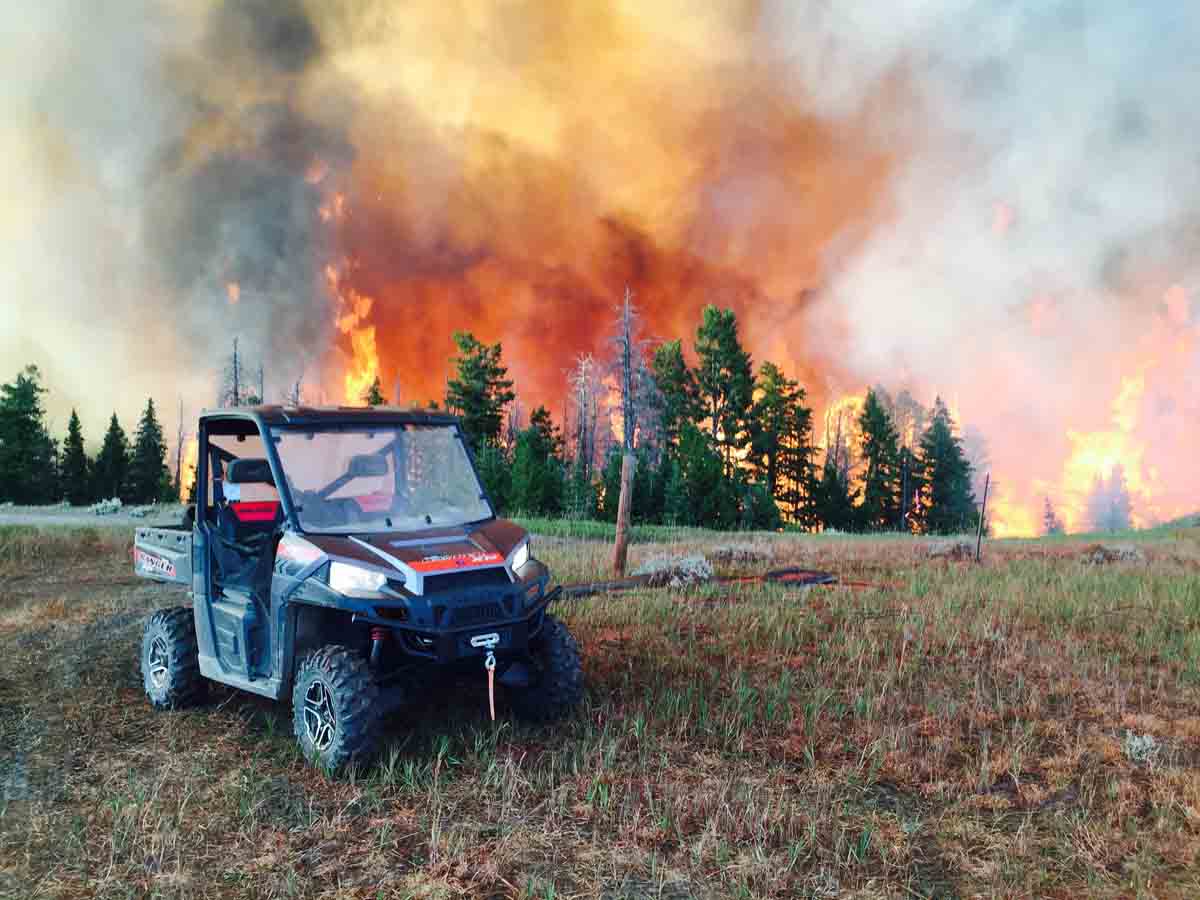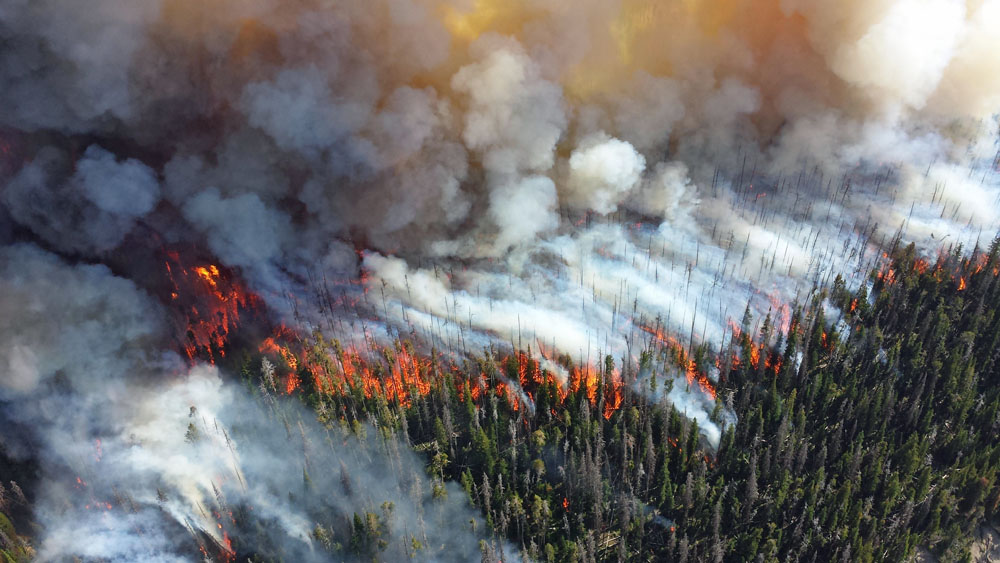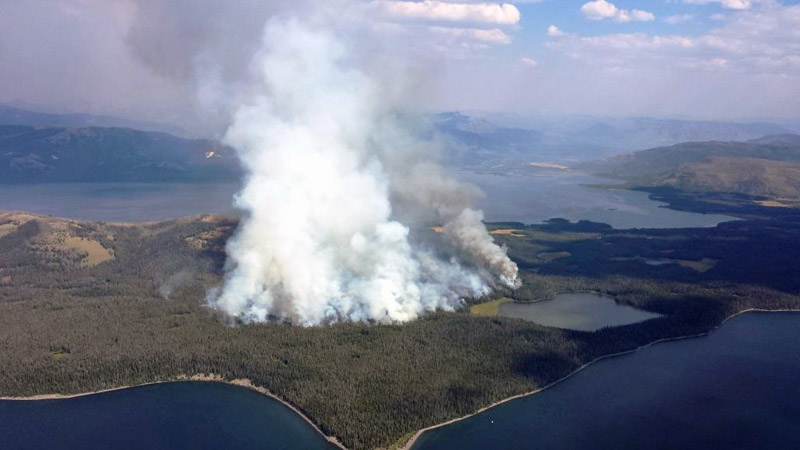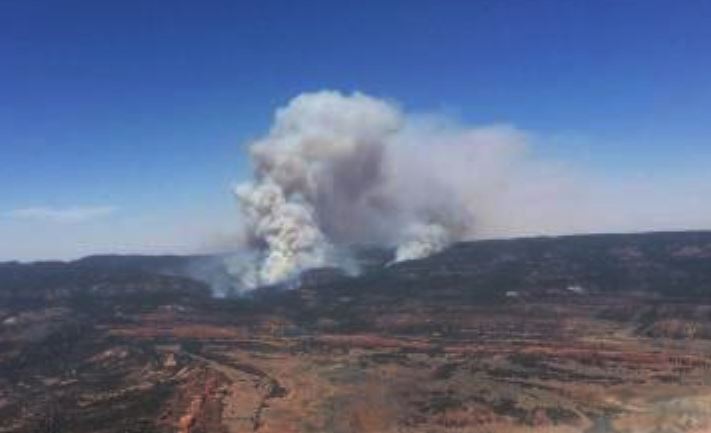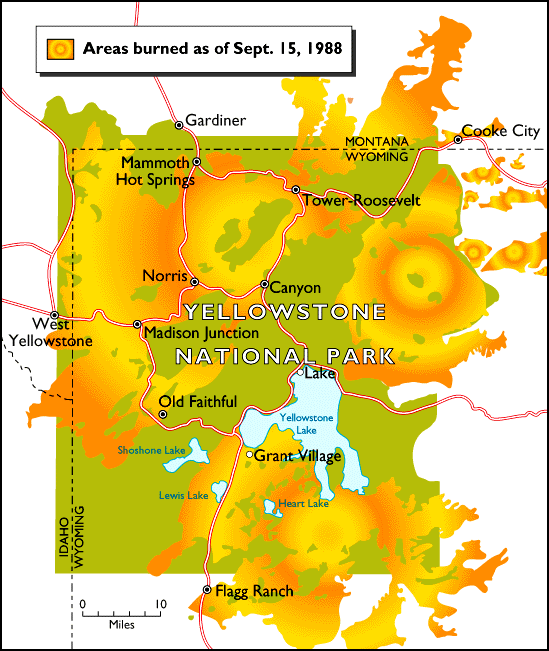Above: Berry Fire. Undated NPS photo.
(More recent article on the Berry Fire published August 27, 2016.)
(UPDATED at 11:10 a.m. MDT August 24, 2016)
The south entrance into Yellowstone National Park is still closed by the Berry Fire which is being monitored, rather than suppressed, in order to benefit the ecosystem.
On Tuesday the fire spread farther into the Bridger-Teton National Forest after burning out of Grand Teton National Park. The northeast and south sides were the most active where it moved about half a mile beyond the previous perimeter.
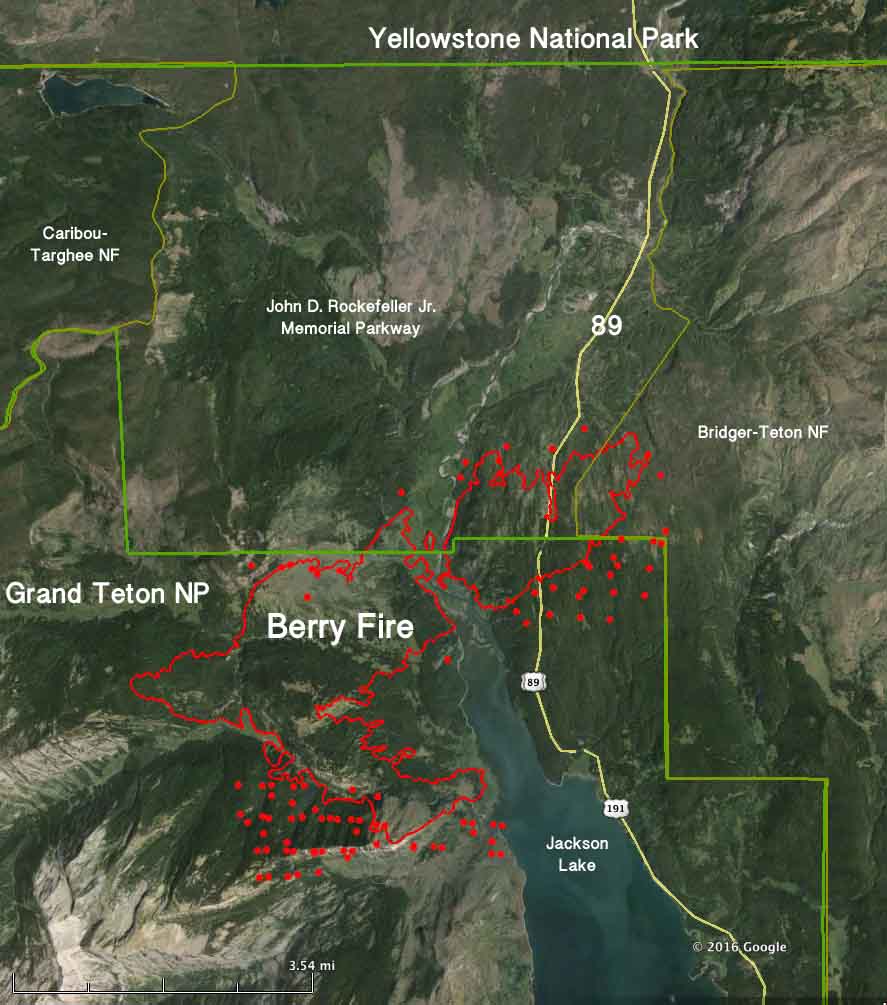
A Type 2 incident management team led by Incident Commander Tim Rodie is now in place. He is assisted by 115 personnel, which is an increase of 77 over the previous day. There are 4 hand crews, 5 engines, and 3 helicopters assigned to the fire.
The incident management team is calling the fire 6,819 acres.
****
(UPDATED at 5 p.m. MDT August 23, 2016)
The Berry Fire continued to spread Tuesday into the Bridger-Teton National Forest and the John D. Rockefeller Jr. Memorial Parkway.
US Highway 89/191/287 in Grand Teton National Park is closed at Leeks Marina on the south, and at the South Gate of Yellowstone National Park on the north.
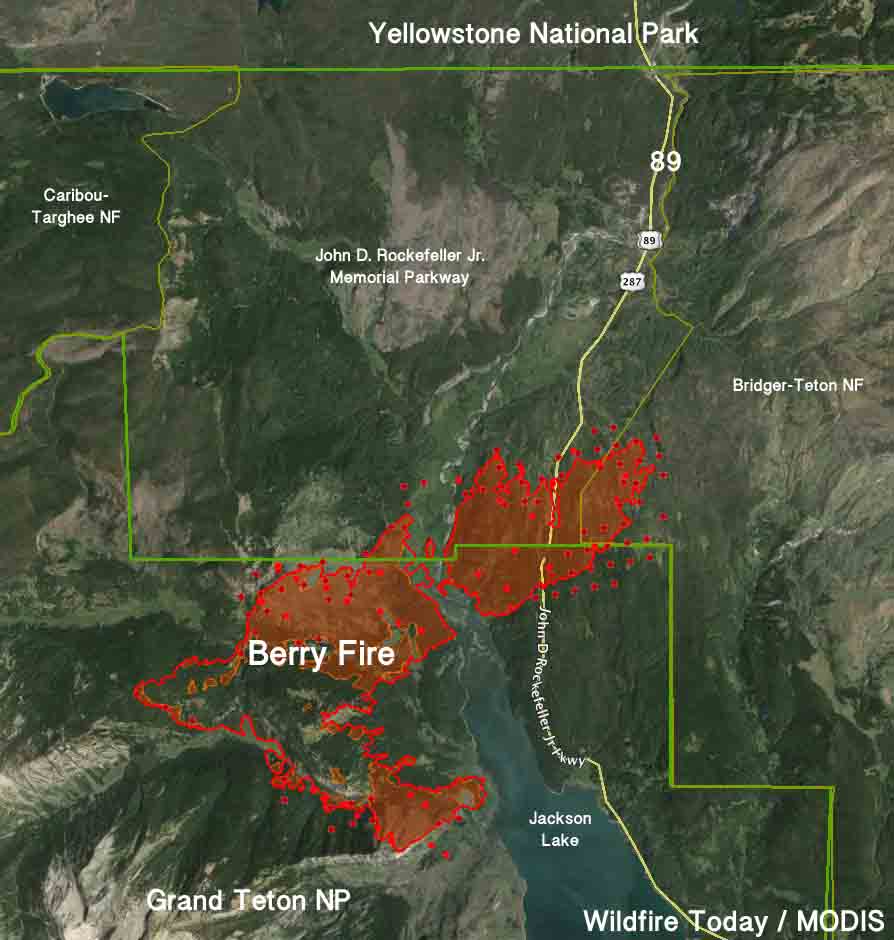
The weather recorded at the Coyote Meadows weather station 12 miles west of the fire has been fairly moderate for the last 24 hours, showing 2 to 6 mph winds out of the southwest and west and 70 degrees Tuesday afternoon. The exception to the “moderate” weather has been the relative humidity which got up to only 35 percent overnight, and at 5 p.m. Tuesday was 12 percent. That will change Tuesday night when the RH increases to 71 percent, but it will fall to 19 percent Wednesday afternoon. The wind Tuesday night and Wednesday will be out of the northeast and north at 5 to 13 mph. This could influence the fire to move to the south over the next 24 hours.
There are still no plans to put out the fire. Grand Teton National Park explained on Tuesday in a statement:
Fire management goals for the Berry Fire include providing for public and firefighter safety; suppressing fire to protect structures and campgrounds; and monitoring fire growth as it burns in wilderness and contributes to long-term forest health.
****
(Originally published at 10:14 a.m. MDT August 23, 2016)
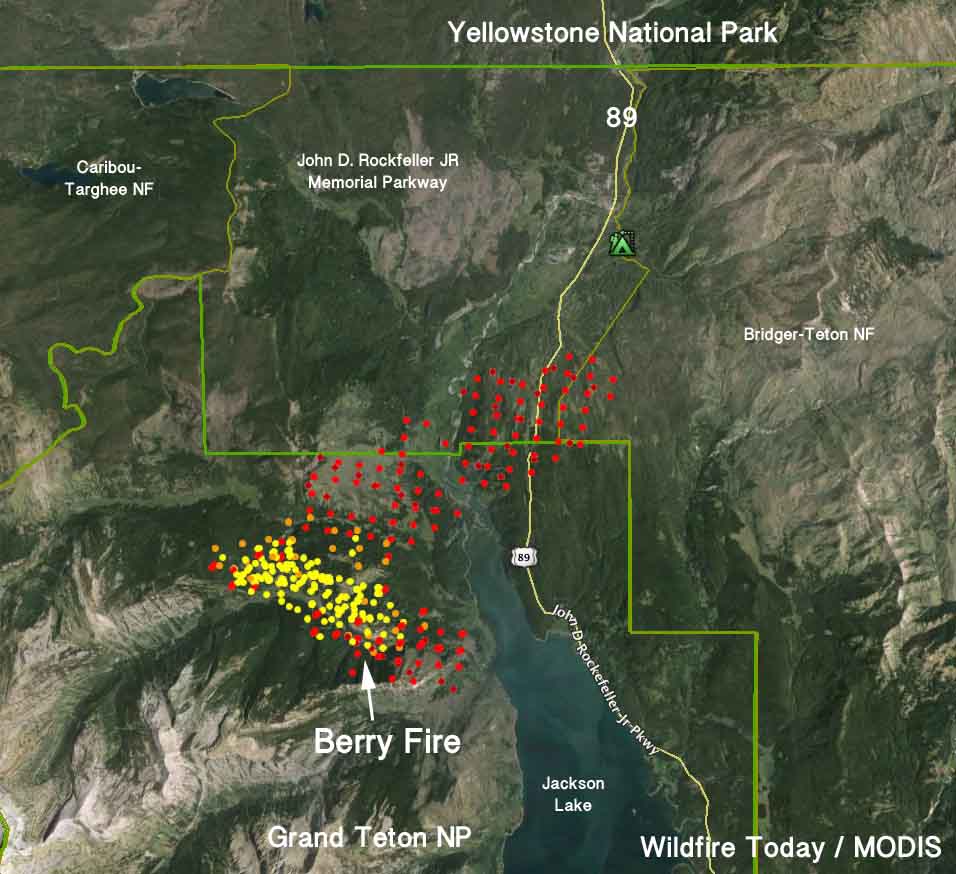
The Berry Fire in Grand Teton National Park more than doubled in size Monday, closing Highway 89 which leads to the south entrance of Yellowstone National Park. The highway is closed at Leeks Marina road (south) and the Flagg Ranch (north) and will remain closed indefinitely, a park spokesperson announced Tuesday morning.
Pushed by a 5 to 8 mph southwest wind gusting up to 22 mph, the fire ran out of the park to the northeast crossing the northern tip of Jackson Lake, the Snake River, and Highway 89. It then spread into the John D. Rockefeller Jr. Memorial Parkway and the Bridger-Teton National Forest. Lizard Creek Campground has been evacuated.
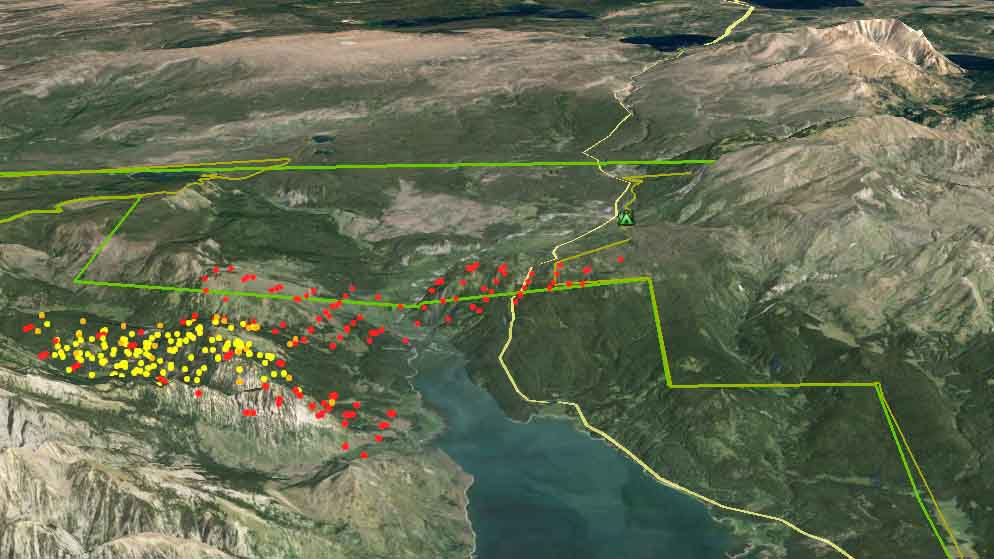
The rapid fire spread on Monday added about 3,800 acres, bringing the size of the Berry Fire up to approximately 6,900 acres as of 4:31 a.m. on Tuesday.
Motorists expecting to enter Yellowstone from the popular south entrance will be forced to take long detours stretching for hundreds of miles. They may not be pleased to learn that National Park Service officials decided on July 25 when the Berry Fire started to allow the fire to “enhance the area’s natural resources”, rather than suppress it.
The moderately strong winds that caused the fire to leave Grand Teton National Park were accompanied Monday by 7 percent relative humidity and 80 degree temperatures.
Highway 89 south of Yellowstone’s south entrance remains closed due to fire. At this time, there is no estimated time of opening.
— YellowstoneNPS (@YellowstoneNPS) August 23, 2016
Grand Teton National Park brought in a Type 3 incident management team for the fire on August 21 when Red Flag Warnings for extreme wildfire danger appeared in the weather forecast. At that time there were 25 personnel assigned. As of August 22 that had increased to 39. Eight fires listed on the August 23 National Situation Report have more than 500 personnel assigned. Five have more than 1,300. However, those fires are larger and are threatening more structures.
Now that the fire has closed Highway 89 and burned outside the park they have ordered a higher level team, a Type 2 team to manage the fire, with Incident Commander Tim Roide. The next level up would be a Type 1 team.
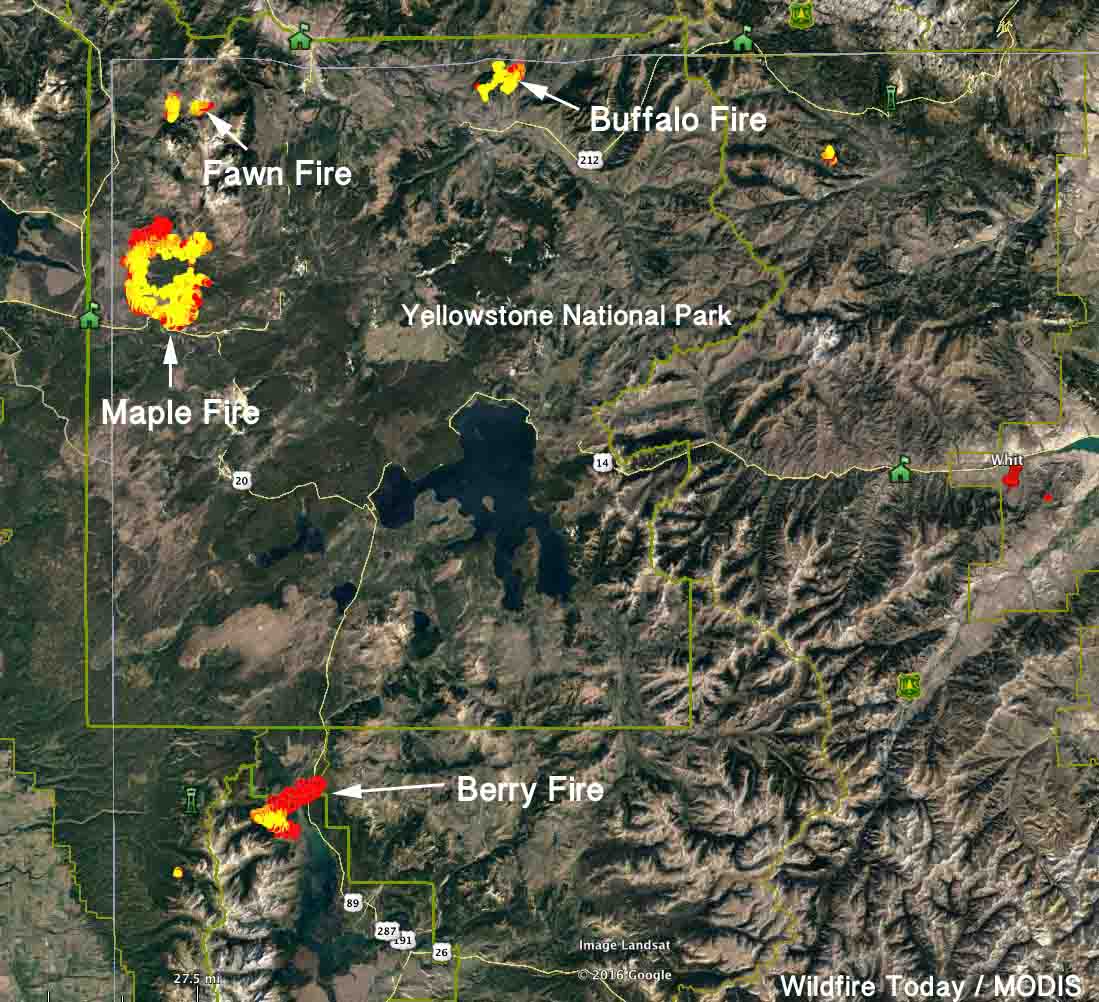
There are three active fires in Yellowstone National Park, the Maple, Fawn, and Buffalo fires. We covered these earlier. They all continued to spread on Monday. The Maple fire east of West Yellowstone, Montana marched another mile to the north, but was active on most of the perimeter. The park says all roads and businesses remain open, including the east and west entrances and the highway that goes right by the Maple Fire, Highway 20.



